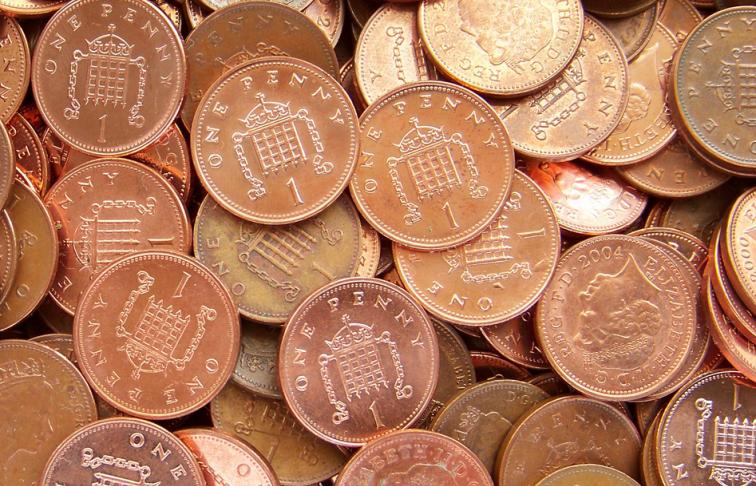Manage your account and see your money through our mobile banking app or on your computer through our website.


The first English penny was introduced around 735 by King Offa of Mercia (an Anglo-Saxon kingdom that broadly covered the modern-day midlands). Far from the copper coins we know today, these pennies were made of silver.
But why did they feature an image of the monarch, as they do today? Because it gave subjects perhaps their only opportunity to ever see their monarch, while at the same time allowing the state to impose its authority on all of the monetary transactions in the Kingdom.
Its name means ‘coin’
Anglo Saxons spoke Old English, a Germanic language. Their word for coin, "penig" is where we get the word ‘penny’ from. Compare it to the German word ‘pfennig’ which, before Germany adopted the Euro in 2002, was their equivalent to our penny (being one hundredth of a mark).
One of the most valuable coins in the UK is a penny.
The 1933 George V penny has an estimated value of £72,000. Why? Originally created as a pattern coin, which means it was never intended for release into circulation, it is believed seven were issued. This makes it extremely rare.
Yet it is also one of the least valued coins in our country today.
In 2016, the Royal Mint, the government-owned company that produces our coins, revealed there are 11.3 billion pennies in circulation. But 60% of 1p coins are only used once, and 8% of pennies are thrown away. That’s the equivalent of £9,040,000 worth of 1p coins being discarded.
You can only spend 20 pennies at a time.
If you do start collecting pennies, it’s worth knowing that they are legal tender for amounts up to 20p. This means that you’re really only supposed to spend twenty 1ps in a single transaction. But while shopkeepers don't have to take any more than 20 penny coins by law, they can use their discretion.
It costs less than 1p to make 1p
The Royal Mint won’t reveal exactly how much it costs to make a penny, just that it is less than 1p. Just like the 2p piece, when decimal 1p coins were first minted in 1971, they were 97% copper. However, due to the rising price of copper in the 1990s, our pennies are now made of steel and coated in copper.
Our Queen faces right but King Charles will face left.
According to a tradition that is believed to go back to the reign of Charles II (1630-1685), the direction the reigning monarch’s head faces on coins alternates. So, while our queen faces right, her son, King Charles, will face left.
The one exception is believed to be our Queen’s uncle, Edward VIII, who insisted that he break with tradition in order to show what he believed to be his best side – and his hair parting. As Edward VIII abdicated before he was crowned, his coinage was not released into general circulation. When his brother, our Queen’s father, took the throne as George VI, his image on coins reinstated the tradition with him facing left.